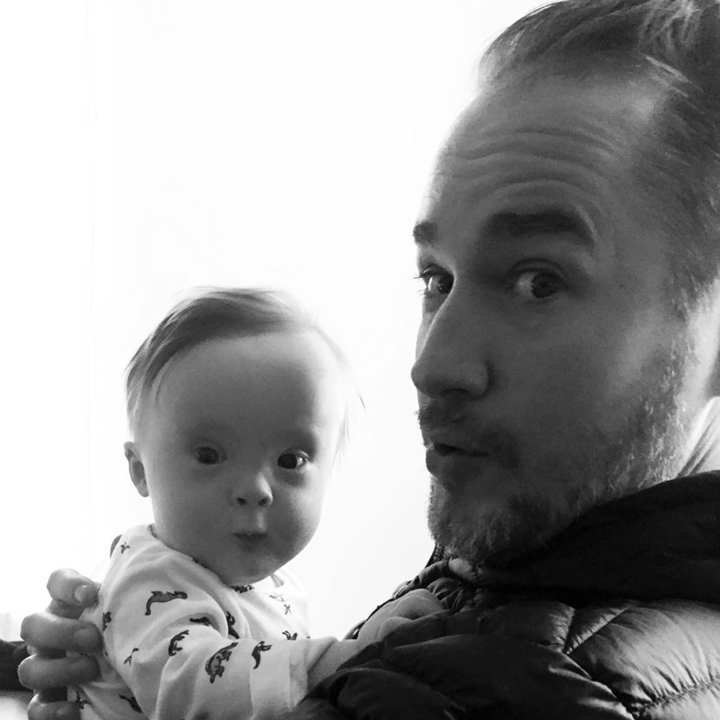Key Takeaways
- Aquent developed a brand experience in the metaverse, an immersive realm with endless possibilities.
- The goal was to create an engaging space for community building, events, talent exhibitions, and remote meetings.
- The team defined clear business objectives and established a strategic experience vision to gain stakeholder alignment and investment.
- To make it accessible and navigable for everyone, they incorporated guiding elements like welcoming signs and simplified user navigation.
- Key insights gained from this project include the importance of regular maintenance to keep the space functional and the need to constantly add new experiences that encourage users to revisit the space.
Listen: How to make immersive brand experiences in the metaverse.
Aquent has always been at the forefront when it comes to innovation, and the potential for immersive brand experiences is no different. As the concept of the metaverse became increasingly tangible, we were inspired to create an immersive metaverse experience that could connect our staff, clients, and talent alike in this new world. An experience that had purpose, authenticity, and felt true to Aquent as the leading global work solutions company.
This led us to consider how we could make our mark. We asked ourselves what our brand purpose should be within this immersive world? How could that purpose be translated into an experience design strategy that provides value to people and value to Aquent as a business? And what should this new brand world look like; how do we leverage and build upon our existing brand guidelines and try new things?
These questions helped guide our design process to define clear objectives, creative strategies, and focused goals. We didn't want our metaverse design to simply mirror our website, nor did we want it to serve as another marketing channel repurposing content. Our intent was to maintain the experiential purity of this new digital realm and create something engaging and inspiring. Something new and different for us.
All of this design thinking was critical to helping define a clear experience vision for how Aquent would exist in the metaverse—a vision that we could share with executive stakeholders for alignment, investment, and sign-off.
Here’s what it took to make our metaverse world a reality.
Defining the experience vision
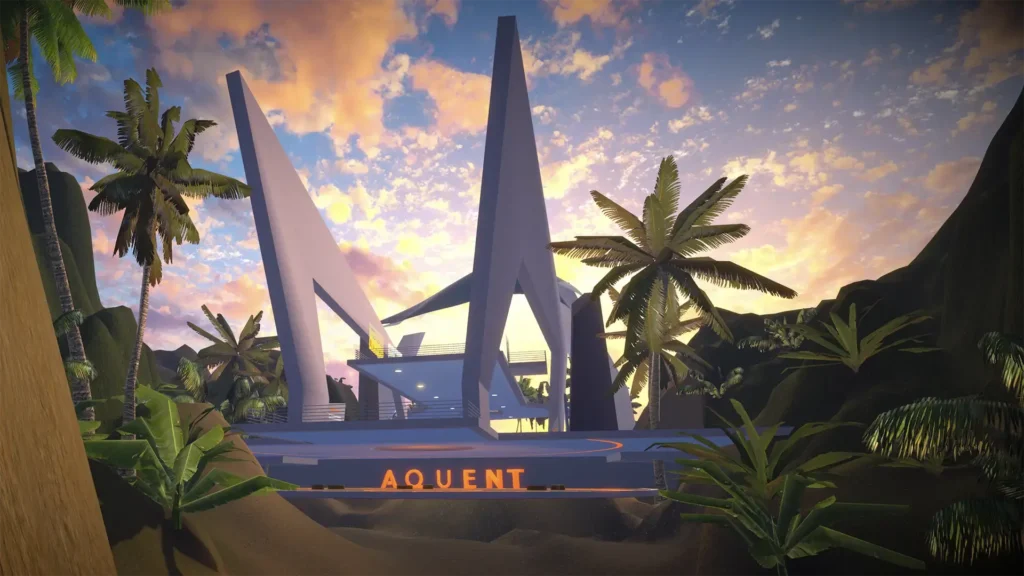
To realize our experience vision, we executed a design thinking process that moved all the way through research, inspiration, discovery, design, and optimization. Our design process focused on the user, empathizing with their needs and level of experience in the metaverse (which for most is zero) to define and create an experience that was easy to access, navigate, and enjoy. A key step was selecting the right platform to create our experience on. After research, we chose Spatial because of its ability to access the metaverse world through the web browser with ease. It’s also great with VR goggles if you have them.
With a platform selected, it was time to define the purpose of our metaverse world.
Creating a community space
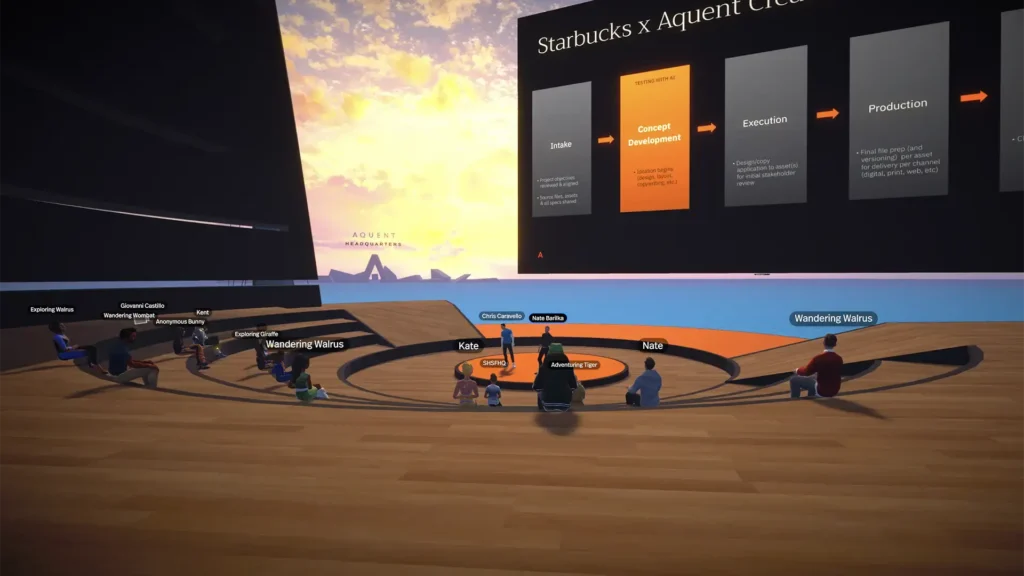
We set out with a core goal in mind: to create a metaverse experience that brings people together and fosters meaningful connections. We would focus on the power of community and knowledge sharing, so we designed a space that encourages interaction and collaboration. This space isn't just for our clients—it's for everyone who wants to be a part of it; our staff, our talent, and the digital community at large. For this reason, we named our metaverse world the Aquent Pavilion.
With this in mind, we designed an iconic space specifically to host events. Events are a core focus and are key to attracting a diverse audience and initiating meaningful conversations and connections. Our events range from Aquent discussions on various topics like “AI in Design” to presentations from both internal and external digital marketing and creative thought leaders.
Showcasing immersive design talent
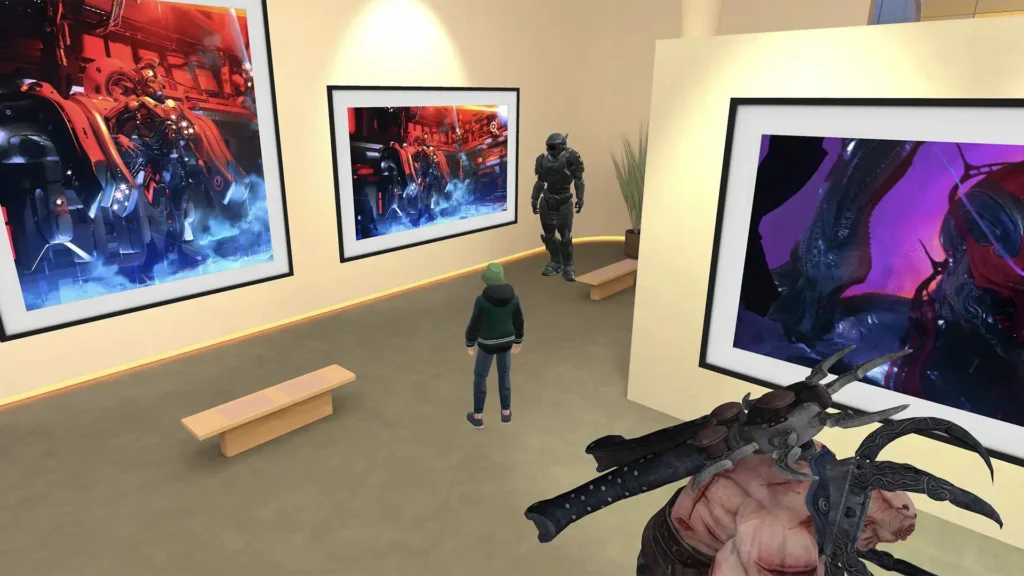
Another experience we developed was a metaverse art gallery that showcases our talent’s immersive 3D design capabilities. Our diverse talent bring expertise from event-based experience design to gaming, character, metaverse design, and more. To highlight these skills, we created an adjacent experience called the Innovator’s Space, where talent art, design, and experience work is displayed.
Visitors can explore the gallery while at the Aquent Pavilion, providing an opportunity for us to subtly promote our core business—connecting clients with exceptional creative, design and marketing talent. By showcasing what our talent can do, we aim to underline our commitment to innovation and pushing boundaries with our clients. This dual approach of hosting engaging events and exhibiting our talents’ work helps us build a community in the metaverse activation by activation. And by design, one experience might lead to the other. A visitor that shows up for a promoted event, might explore our metaverse gallery.
Connecting with colleagues
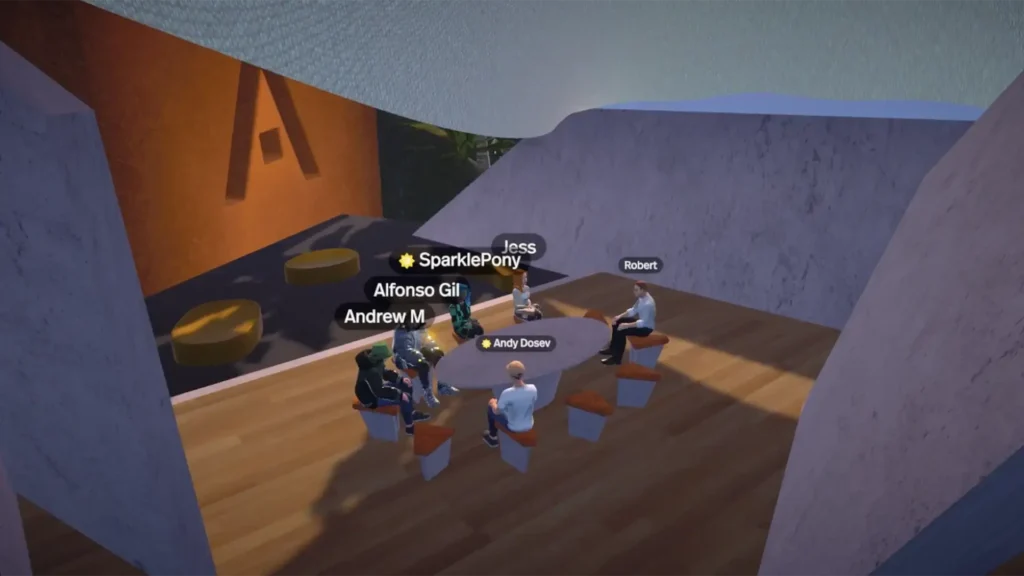
We designed multiple spaces across the Pavilion where Aquent teams and clients could hold meetings and have conversations. As a remote-first company, we're always exploring innovative ways to connect virtually, and the metaverse provides another exciting platform for this through virtual meeting rooms. Imagine us, dressed up as expressive avatars, conducting this meeting in a virtual setting called the “Tokyo Room” that sits on the top of a tropical cliff—that's an example of the immersive brand experiences we want to provide our staff.
For this reason, we designed a variety of different remote work spaces within our metaverse world, akin to the different rooms available in a physical office. This included conference rooms for formal discussions and casual areas for relaxed conversations. We pushed these spaces to be both beautiful and functional with the goal of inspiring our teams. We see it as a type of virtual remote office when you need it, an easy and engaging space for our sales team and clients to connect and internal teams to collaborate.
Rallying stakeholder support
A key role of being an experience or design leader is to ensure clarity before diving into creative work whether detail design or execution based. The same is true for any step in the design process really. Without upfront agreement, we risk producing outcomes months later that don't meet expectations because we didn't invest the time in alignment and consensus-building. We also risk wasting precious resources and investment.
One of our biggest initial challenges in creating this metaverse world was managing different ideas and opinions about what the experience should actually be and deliver. There was good and healthy debate about its purpose. But with design thinking processes to create clear objectives, strategies, and an experience design vision, it was much easier to get stakeholders aligned to move forward.
Aligning stakeholders around a clear vision is a complex task, given the variety of ideas and perspectives. It is crucial to focus and streamline these opinions early on to avoid complications later. We aimed to create clarity around the business strategy, understanding that multiple senior stakeholders would have vested interests in how their respective departments or functions were represented in the metaverse.
Branding Aquent in an immersive world
With the experience vision aligned with stakeholders, we could confidently start to explore how the Aquent Pavilion would come to life in design. There were two core things to figure out next. From a visual design standpoint, what could our brand look like in immersive design where the possibilities are endless? And from an experience design standpoint, how could our brand environment be structured to support function while also impressing with form?
Extending the Aquent brand in 3D
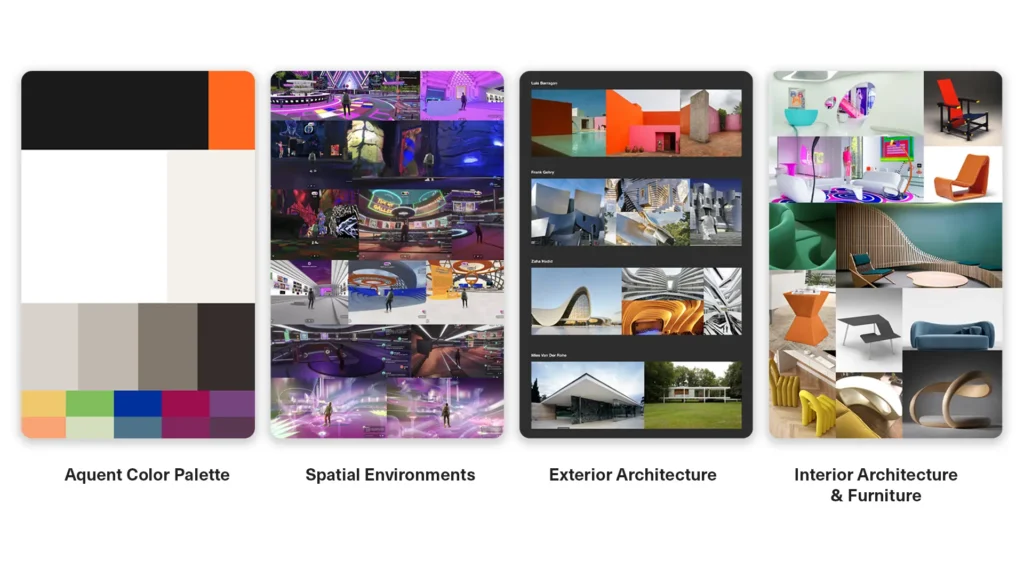
As for what it means for a brand like ours to appear in the metaverse, it requires letting go and trying new things. But it also requires some balance and reason. Translating our brand identity into an immersive 3D world presented its own challenges. We had to manage a duality of adhering to our brand guidelines while allowing for freedom and discovery in this new realm where fantasy can thrive.
When considering a company's brand identity, there are traditional design processes that shape and define how a brand feels and communicates. These are great for driving business through the usual digital channels and up. However, what makes the metaverse exciting is the opportunity to express your brand in new ways, either authentically and true to the core for reasons of familiarity, or reimagined by fantasy to surprise and delight.
This idea of self-expression and fantasy in the metaverse extends into our approach to designing this world. We saw an opportunity to evolve and express ourselves in ways that take advantage of the metaverse's capabilities. Instead of replicating a standard office environment, we chose to create a unique island with attention grabbing architecture and structures, vibrant colors that are true to our brand palette, and surprising flora and fauna.
We wanted to experiment and push boundaries. Rather than taking a CAD design of an office and translating it into a virtual environment, which would be predictable and unexciting, we aimed to create an architectural marvel. Our goal was to design a space that would leave an impression, just like the awe-inspiring structures created by famous architects like Frank Gehry, Le Corbusier, and Daniel Libeskind.
Our design process involved looking at what others had done in the metaverse, drawing inspiration from their ability to suspend reality and delve into fantasy while still grounding their brand. It also involved partnering closely with cross-functional teams like technology, engineering, and our metaverse design group. Giovanni Castillo, our Senior Metaverse Designer, was instrumental in this phase of the work. He began visualizing design possibilities and prototyping the world that would become the Aquent Pavilion. Gio has a design and architectural background which was a unique advantage on this project. He was able to bring in his knowledge of art history and 3D form, helping us push boundaries and create an architecturally impressive environment.
In essence, our mission was not just to create a metaverse brand activation but to design a space that would be functional at its core, impressively beautiful, and provide a unique experience for people.
Structuring the space and experience design
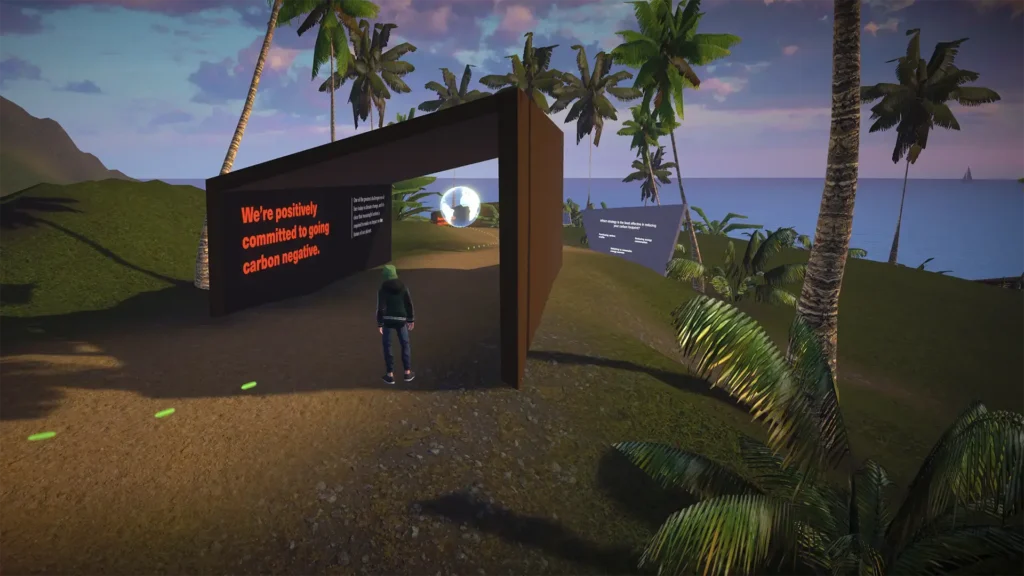
Our aim was to design a remote office space that is anything but typical, serving multiple functions from hosting meetings to larger presentations. With a real company beach house in Hawaii, we chose the setting of a tropical island to establish the Aquent Pavilion.
One key feature is our Cambridge theater, a full Greek-style round theater. By creating 180º of bleacher seating, we enable attendees to see everyone else present, enhancing the feeling of a shared experience. This intentional design helps foster a sense of community and drives greater engagement and collaboration.
We also designed a range of different spaces for small meetings and client presentations. These spaces can also be used for mental breaks, akin to chill-out rooms in a physical office. It's a futuristic concept—taking a break from work to unwind in a serene immersive virtual environment, perhaps listening to music or chatting with colleagues.
But these rooms are not just about stepping away from work; they're also designed to inspire thinking. By immersing yourself in a different, beautifully designed space, you may find fresh ideas sparking. In these areas, brand design is quite intentional. We've used specific colors and elements to subtly reinforce our identity, creating a unified feel throughout the entire experience.
The overall design is not overt or jarring; rather it softly communicates our brand's identity, ensuring that no matter where you are in this virtual world, you'll always feel a sense of cohesion. The aim is to create a space that feels like one entity, providing a uniquely immersive and comforting experience.
We encourage exploration by designing pathways around the island guiding visitors to interactive challenges that provide insights into Aquent. One path leads to a sustainability exhibit, reflecting our commitment as a remote company to reduce our environmental impact and strive toward becoming carbon negative. This exhibition serves as a platform to share our sustainability story. A separate experience walks visitors through the history of Aquent, highlighting our longevity and significance in the industry.
Making the Aquent Pavilion accessible
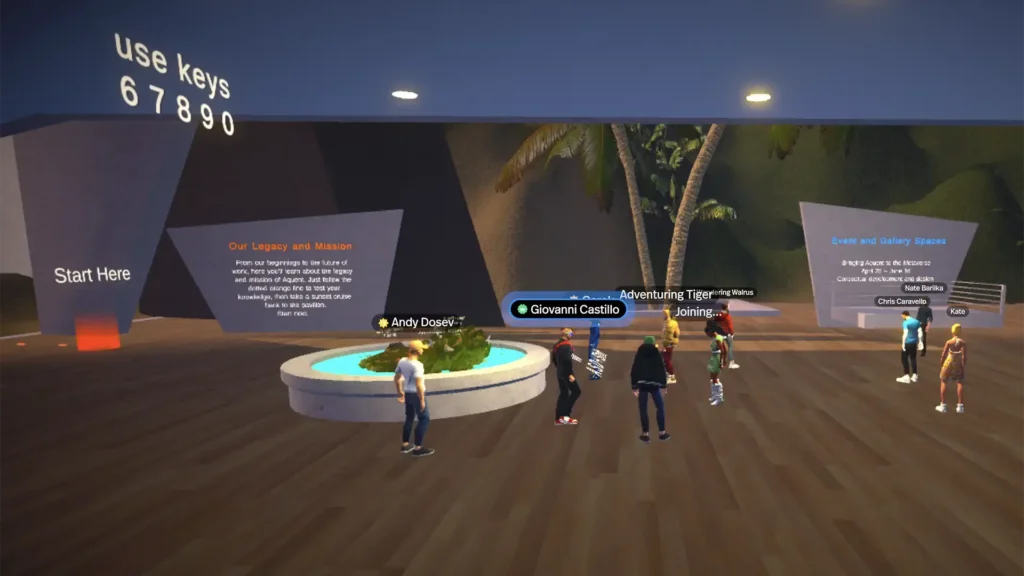
Our experience strategy for creating a metaverse world had to consider the user journey above all, especially for first-time visitors. Many of our clients had heard about the metaverse but hadn't yet experienced it. Questions about the need for VR goggles are common and can be a deterrent at times.
We intentionally built our platform on Spatial to ensure the lowest barrier to entry. While VR headsets offer a more immersive experience, they are expensive and not widely adopted yet, especially among our target audience. We wanted our platform to be accessible to anyone with a browser, despite platform limitations imposed on the design side.
Navigating an immersive metaverse experience comes with a learning curve for most first-time visitors. We approached design with empathy, incorporating guiding elements like welcome signage and clear instructions for avatar navigation. We also designed visual pathways with lights to help guide visitors around the island. Even small details mattered to help guide wayfinding. We spent considerable time deciding on the initial user landing spot and its surroundings, always prioritizing simplicity and user-friendliness.
In essence, project success hinged not only on creating an engaging virtual space but also on making it easily accessible and navigable for first-time metaverse visitors.
All of this said, emerging metaverse worlds and the platforms and hardware on which they are built are not where they need to be when it comes to accessibility. We struggled with this when building the Aquent Pavilion as well. More needs to be done to ensure everyone’s needs are supported in immersive experiences.
Reflecting on lessons learned
This was our first venture into the metaverse, and while it was an experiment for us, it was a successful one. We won W3 awards, received positive feedback, were featured on the Spatial homepage, and learned valuable lessons about designing for this new medium.
Our project began with defining a clear business strategy and experience vision. We used that to build consensus with senior leaders and the C-suite. It was critical that we had alignment before we began the design and development process. And investing the time upfront to conduct research and inspiration was key to empowering our discovery process.
At a high level, our approach to realizing the Aquent Pavilion involved five key phases: business strategy definition, experience vision discovery, experience design and branding, prototyping and development, and ongoing refinement and optimization. We used a design-thinking process throughout, where visual and experience design ideas were tested in prototypes, before being refined further and tested again.
From a design perspective, we let go of and held on to brand guidelines in parallel. Translating a brand via guidelines into immersive design yields a more predictive outcome than finding something that is inspired and new, that pushes a brand in a new direction. Design excellence hinges on balancing what is and what could be.
Like any platform or channel, digital experience design for the metaverse is not without technical challenges. The work is complicated and requires precise design, production, engineering, and management skill sets. More importantly, it requires the right team structure and design process to create something special.
Just as a website needs ongoing updates and maintenance, so does a metaverse experience. The key is to continually support and update things so it runs well, in addition to creating new experiences to motivate return visits and sustain engagement.
Lastly, like any new and emerging medium, having the courage to experiment, make mistakes, and find solutions matters above all.
The Aquent Pavilion is open 24/7. We hope it inspires you, and we hope to see you at an upcoming event soon.
Latest.

Reimagining org design in the fast-paced new world of AI.
Insights from InsideOut, Leadership & Management, Content & Creative

Meet the new emerging role: AI Trainer
Career Advice, Leadership & Management, Engineering & Technology, Innovation & Emerging Tech, Talent Acquisition & Recruitment

The great AI investment paradox.
Leadership & Management, Engineering & Technology, Innovation & Emerging Tech


